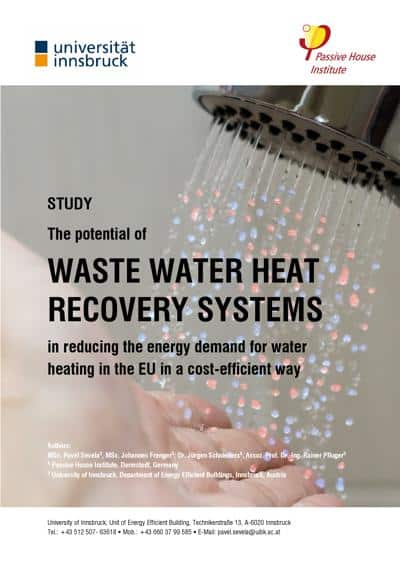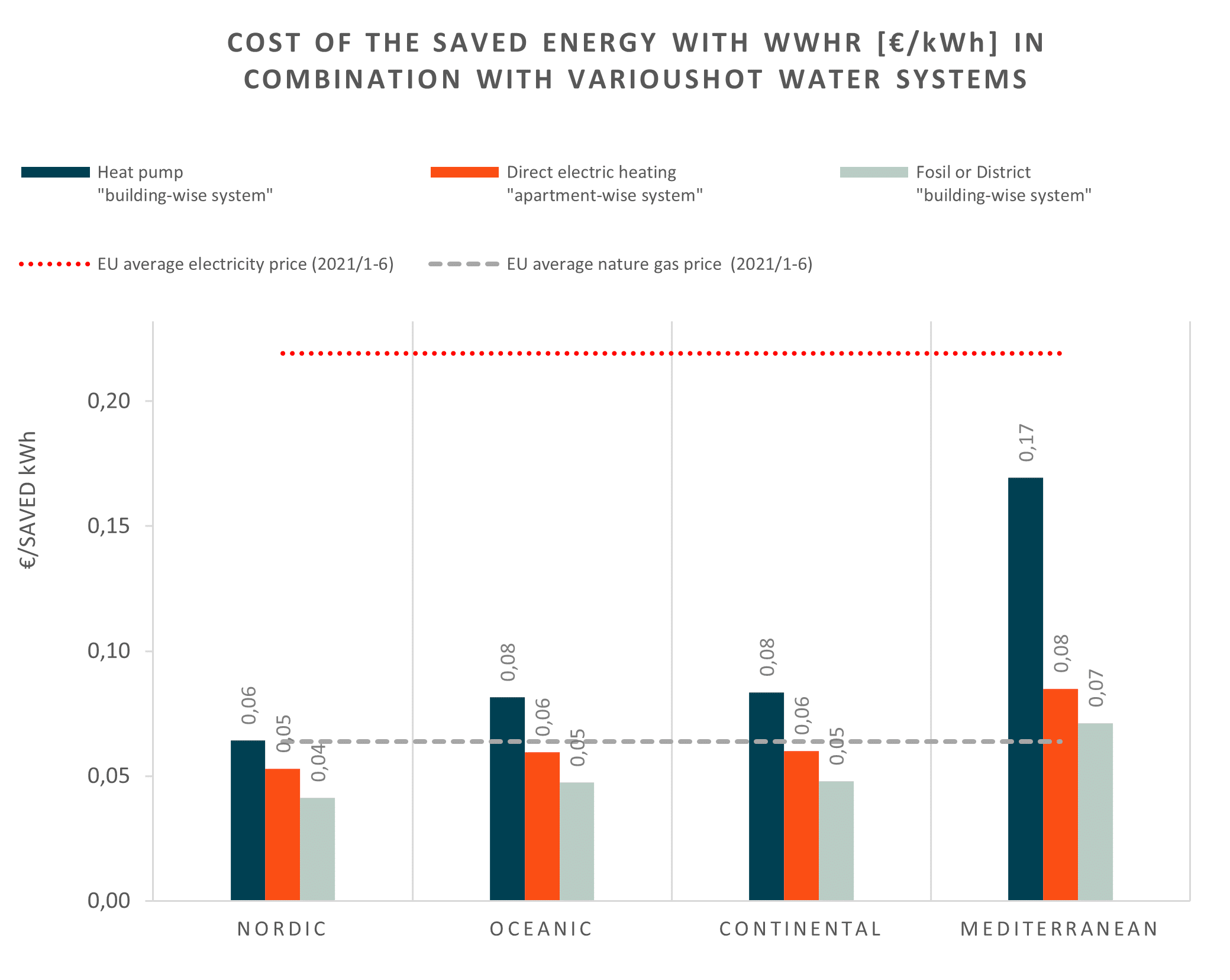
Wastewater Heat Recovery (WWHR) technology was identified as the most promising emerging technology for unlocking the under-addressed potential for reducing the energy needed for water heating
A new study, commissioned by the European Copper Institute at the University of Innsbruck and the Passive House Institute, provides an overview of the planned energy and climate saving targets in the area of domestic hot water production and proposes target-oriented solutions to solving these challenges. The persistent energy need for hot water is critically highlighted as a promising category for achieving energy savings beyond the current EU levels.
After extensive research, Waste-Water Heat-Recovery (WWHR) technology was identified as the most promising emerging technology for unlocking the under-addressed potential for reducing the energy needed for water heating. In particular, shower heat-exchangers offer a cost-effective way of utilizing otherwise wasted heat for preheating cold fresh water, reducing the temperature span covered by the water heater. Numerous global studies show that WWHR technologies offer a significant saving potential of “energy need” for domestic hot water by up to 50 percent, especially for showering. This leads to savings on “delivered energy” of up to 40 percent for water heating, including system inefficiencies such as distribution and storage losses. These results are in line with the laboratory and in-situ measurements of the University of Innsbruck.
The unique advantage of WWHR is its simplicity and robust construction, free of moving parts, achieving high thermal energy savings without compromising on user comfort. The research shows that WWHR systems are already technically mature at product level and officially recognized and regulated in a growing number of European and global markets. In fact, in Europe, the trend in developing new WWHR techniques is now reflected on a global scale. Based on investment and maintenance costs, the price for each kWh that a given WWHR system recovers during its lifetime could be calculated. This so-called “price of energy saved” is a calculation of a fixed energy price for the next decades, while using the WWHR. In conjunction with an already highly efficient heat pump, the best value is as low as 0.06 €/kWh, which is nearly a fourth of the average electricity price of 0.232 €/kWh in the EU area in Q1 of 2021.

The cost-effectiveness of WWHR is best in climates with cold ground temperatures and in cases where showers are used extensively, such as in tourism, the wellness sector, and the hotel industry. Nevertheless, even an average European household will save around a €100 in annual costs with WWHR.
At the European level, the WWHR itself is theoretically capable of surpassing the energy saving targets planned in the “Fit for 55” climate action in the hot water sector, if all buildings are equipped accordingly, as outlined in this study. If between 2022 and 2030, every second renovated or newly constructed building in Europe were equipped with the WWHR system, 35.8 TWh of energy and 6,6 Megatons of CO2e emissions could be saved.

Although WWHR has been a well-proven technology for decades in some countries, it is still unknown in most European regions. Further action, particularly the creation of a European legal framework, an information campaign, the training of professionals and the granting of subsidies, is needed to unlock the full energy saving potential and to accelerate the adaptation of this promising, sustainable technology into practice.
Download the study: The potential of WASTE WATER HEAT RECOVERY SYSTEMS in reducing the energy demand for water heating in the EU in a cost-efficient way
